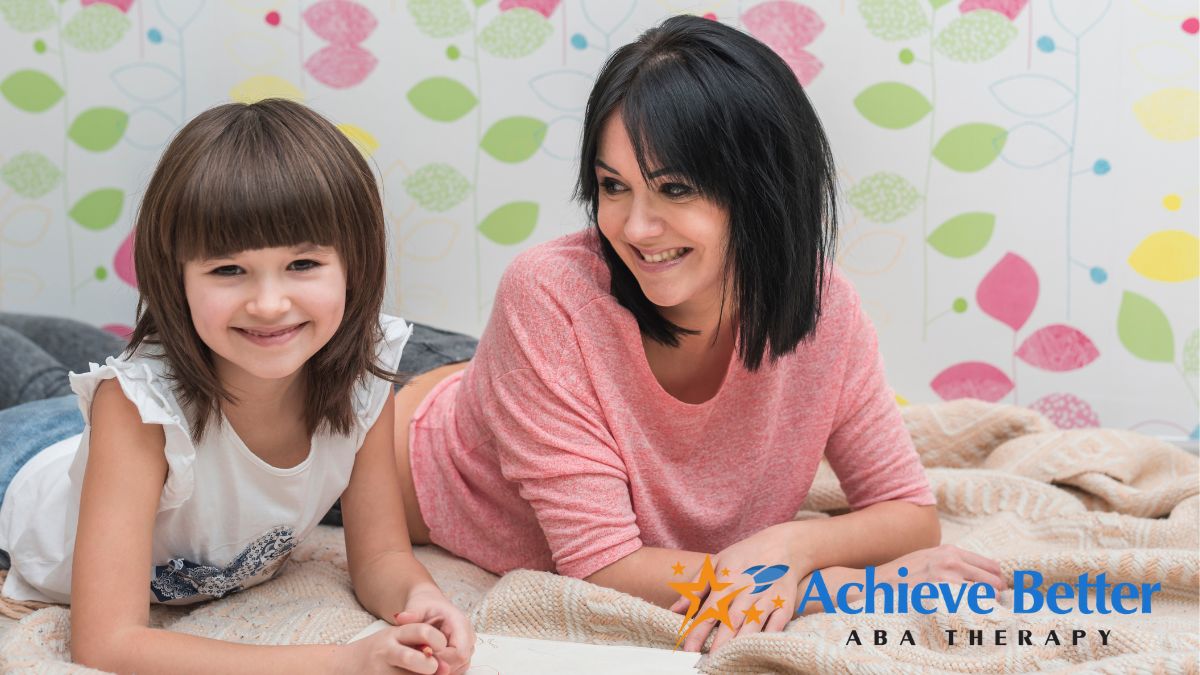Calming Sensory Room Ideas for Autism

Understanding Autism
To fully understand the importance of calming sensory rooms for individuals with autism, it's essential to have a clear understanding of autism itself and its common characteristics.

What is Autism?
Autism, also known as Autism Spectrum Disorder (ASD), is a neurodevelopmental disorder that affects communication, social interaction, and behavior. According to the Diagnostic and Statistical Manual of Mental Disorders (DSM-5), autism is characterized by persistent deficits in social communication and interaction, as well as restricted and repetitive patterns of behavior, interests, or activities.
Autism is a complex condition, and its exact causes are still being studied. Multiple factors, including genetic and environmental influences, contribute to the development of autism. For more information on the causes of autism, refer to our article on why autism happens?.
Common Characteristics
Individuals with autism may exhibit a wide range of characteristics, which can vary in severity. Some common characteristics of autism include:
- Difficulty with social interaction and communication: People with autism may struggle with understanding and using verbal and nonverbal communication cues. They may have difficulty maintaining eye contact, engaging in reciprocal conversation, and understanding social norms and cues.
- Repetitive behaviors and restricted interests: Many individuals with autism engage in repetitive behaviors, such as hand-flapping, rocking, or repeating certain phrases. They may also develop intense interests in specific topics or objects.
- Sensory sensitivities: Sensory sensitivities are common among individuals with autism. They may be particularly sensitive to certain sensory stimuli, such as noise, lights, textures, or smells. This sensitivity can lead to discomfort, anxiety, or overload, affecting their ability to focus and engage. For more information on noise sensitivity in autism, visit our article on autism noise sensitivity.
- Difficulty with transitions and changes: Individuals with autism often struggle with transitions and unexpected changes in routines. They may find comfort in predictability and can become anxious or distressed when faced with new or unpredictable situations.
It's important to note that autism is a spectrum disorder, meaning that individuals with autism experience a wide range of abilities and challenges. Each person with autism is unique, and their experiences and needs may differ. For more information, consult our article on is staring a sign of autism?.
By understanding the fundamental aspects of autism and its common characteristics, we can better appreciate the significance of creating calming sensory rooms to support individuals with autism. These specialized spaces provide a safe and comfortable environment that caters to their unique sensory needs and promotes relaxation and well-being.
Importance of Sensory Rooms
Sensory rooms play a crucial role in supporting individuals with autism by providing a safe and calming environment that caters to their sensory needs. These specially designed spaces offer a range of sensory experiences and stimuli that can help individuals regulate their sensory processing, reduce anxiety, and promote overall well-being.
Benefits of Sensory Rooms
Numerous studies have highlighted the benefits of sensory rooms for individuals with autism. For instance, research published in the Journal of Autism Studies emphasized that sensory rooms can have a positive impact on children with autism, improving their attention, social interaction, and overall behavior. Other studies have also shown that sensory rooms can enhance emotional regulation and self-soothing abilities.
The benefits of sensory rooms extend beyond emotional and behavioral improvements. Occupational Therapy Journal research has indicated that these rooms can help individuals with sensory processing disorders feel more comfortable and at ease in their environment. Sensory rooms have also been found to promote positive sensory experiences, reduce noise sensitivity, and help individuals engage in auditory stimming in a controlled and supportive environment.
Creating a Safe Space
Creating a safe space within a sensory room is essential to ensure that individuals with autism can fully benefit from the sensory experiences offered. This involves careful consideration of various elements, such as lighting, sound, and textures.
Lighting in a sensory room should be adjustable, allowing individuals to control the intensity and color of the lights to suit their preferences and sensory needs. Soft, diffused lighting can create a calming atmosphere, while colorful lights or projected images can provide visual stimulation and promote relaxation.
Sound is another important aspect to consider. The room should be designed to minimize external noises and provide options for controlling the sounds within the space. Soft music, nature sounds, or white noise machines can help create a soothing auditory environment, reducing any discomfort caused by noise sensitivity.
Textures within the sensory room can contribute to the overall sensory experience. Incorporating a variety of tactile materials, such as soft fabrics, textured surfaces, and sensory toys, allows individuals to explore different textures and engage their sense of touch.
By creating a safe space within a sensory room, individuals with autism can find comfort, relaxation, and sensory regulation. It is important to note that the specific design and elements of a sensory room may vary based on individual preferences and needs. Seeking professional advice from occupational therapists or other experts can help tailor the sensory room to meet the specific requirements of individuals with autism.
Elements of a Sensory Room
A sensory room is designed to provide a safe and calming environment for individuals with autism. It incorporates various elements that help stimulate the senses and promote relaxation. Three key elements of a sensory room are lighting, sound, and textures.
Lighting
Lighting plays a crucial role in creating a soothing atmosphere in a sensory room. It is important to consider the impact of lighting on the wellbeing of individuals with autism. Studies, such as "The Impact of Lighting on the Wellbeing of Autistic Individuals" and "Lighting Design Considerations for Sensory Rooms," have explored the effects of different lighting conditions on individuals with autism. Soft, adjustable lighting that can be dimmed or controlled is often preferred, as it helps to reduce sensory overload [1].
In a sensory room, the lighting can be adjusted to provide a comfortable and calming atmosphere. Some individuals may prefer low lighting or the use of colored lights to create a specific ambiance. It's important to consider the individual's sensory needs and preferences when determining the lighting setup in a sensory room.
Sound
Sound sensitivity is a common characteristic among individuals with autism. The auditory system can be particularly sensitive, leading to discomfort and anxiety in response to certain sounds. Understanding the role of sound in creating a calming environment is crucial when designing a sensory room.
Research articles like "The Role of Sound in Creating a Calming Environment for Individuals with Autism" and "Sound Sensitivity in Autism Spectrum Disorders" highlight the impact of sound on individuals with autism. In a sensory room, it is important to minimize external noises and create a controlled sound environment. This can be achieved through the use of sound-absorbing materials, such as acoustic panels or curtains, as well as the incorporation of soothing background sounds or music. These measures can help reduce auditory stimulation and promote relaxation.
Textures
Textures play a significant role in sensory experiences and can have a calming effect on individuals with autism. Understanding the importance of textures in sensory rooms is essential for creating a comfortable environment.
Studies such as "The Importance of Textures in Sensory Rooms for Autistic Individuals" and "Exploring Textural Preferences in Individuals with Autism" emphasize the impact of textures on individuals with autism. Sensory rooms often incorporate a variety of tactile materials and surfaces, such as soft cushions, textured walls, or sensory mats. These textures can provide a soothing and engaging sensory experience, enabling individuals to explore and interact with different tactile sensations.
The choice of textures in a sensory room should consider the preferences and sensitivities of the individual with autism. It is important to provide a range of textures that cater to different sensory needs, ensuring a personalized and comfortable experience for each individual.
By incorporating appropriate lighting, sound, and textures, a sensory room can create a calming and therapeutic environment for individuals with autism. These elements work together to support sensory regulation and promote relaxation, providing individuals with a safe space to engage with their senses in a controlled and comfortable manner.
Calming Sensory Room Ideas
When it comes to creating a calming sensory room for individuals with autism, incorporating the right elements can make a significant difference in promoting relaxation and reducing sensory overload. In this section, we will explore two essential components of a sensory room: visual stimuli and sensory toys.
Visual Stimuli
Visual stimuli play a crucial role in creating a calming environment within a sensory room. By carefully selecting and arranging visual elements, you can help individuals with autism feel more relaxed and at ease. Research studies like "The Role of Visual Stimuli in Calming Sensory Rooms" (Sensory Room Design Journal) and "Using Visual Stimuli to Create a Calming Environment" (Journal of Sensory Integration) have shed light on the positive impact of visual stimuli in sensory rooms.
Here are some ideas for incorporating visual stimuli in a calming sensory room:
- Soft lighting: Utilize dimmable lights or install adjustable window coverings to control the amount of natural light entering the room. Soft, warm lighting can create a soothing atmosphere.
- Visual aids: Hang calming pictures, artwork, or posters with nature scenes, abstract patterns, or peaceful imagery on the walls. These visuals can provide a sense of tranquility.
- Bubble tubes or lava lamps: These dynamic visual displays can captivate attention and promote a calming effect. Watching the slow movement of bubbles or the mesmerizing flow of colored liquid can be soothing for individuals with autism.
- Projected images: Use projectors to display gentle, moving images on a wall or ceiling. This can create a visually engaging and calming experience.
Remember, the specific visual stimuli that work best may vary from person to person. It's important to observe and understand each individual's preferences and sensory needs to tailor the visual elements accordingly.
Sensory Toys
Sensory toys are another essential aspect of a calming sensory room for individuals with autism. These toys provide tactile, auditory, and visual stimulation, promoting relaxation and sensory exploration. Studies such as "The Impact of Sensory Toys on Calming Strategies" (International Journal of Autism Studies) and "Sensory Toys: A Key Element in Calming Sensory Rooms" (Sensory Room Therapy Quarterly) highlight the significance of sensory toys in creating a calming environment.
Consider incorporating the following sensory toys in a calming sensory room:
- Fidget toys: Fidget toys offer tactile feedback and help individuals with autism focus their attention. These can include squishy stress balls, textured fidget spinners, or manipulative toys like Rubik's cubes.
- Weighted blankets or lap pads: Weighted blankets or lap pads provide deep pressure stimulation, which can have a calming effect. These can help individuals feel grounded and reduce anxiety.
- Sensory bottles: Sensory bottles filled with colorful liquids, glitter, or small objects can provide visual stimulation and a sense of calm when shaken or observed.
- Soft fabric toys: Plush toys made of different textures can offer tactile comfort. Look for toys with varying softness or different types of fabric to cater to individual sensory preferences.
Remember to assess each individual's sensory needs and preferences to select toys that align with their unique sensory profiles.
By incorporating visual stimuli and sensory toys in a calming sensory room, you can create a soothing environment that promotes relaxation and helps individuals with autism regulate their sensory experiences. Remember to personalize the room based on individual preferences and seek professional advice for tailored strategies and recommendations.
Sensory Activities
When creating a calming sensory room for individuals with autism, incorporating sensory activities is essential. These activities can provide stimulation, relaxation, and a sense of control. Two popular sensory activities commonly found in calming sensory rooms are interactive panels and sensory swings.
Interactive Panels
Interactive panels are highly engaging and provide a variety of sensory experiences. These panels typically consist of different textures, shapes, colors, and interactive elements that individuals can touch, manipulate, and explore. They offer a multisensory experience, stimulating tactile, visual, and sometimes auditory senses. Interactive panels can be wall-mounted or freestanding, allowing for flexibility in the sensory room setup.
These panels provide numerous benefits for individuals with autism. They can help improve fine motor skills, hand-eye coordination, and visual tracking abilities. Additionally, interactive panels offer a safe and controlled space for individuals to engage in sensory exploration and self-regulation. By interacting with the various elements on the panel, individuals can redirect their attention, release energy, and experience a calming effect.
Sensory Swings
Sensory swings are another popular sensory activity in calming sensory rooms. These swings provide a gentle and rhythmic motion that can promote relaxation and reduce anxiety. Sensory swings come in various styles, including hammocks, platform swings, and cocoon swings, each offering a unique sensory experience.
The swinging motion of these swings can help individuals with autism regulate their sensory input and promote a sense of calm. It provides vestibular stimulation, which can have a soothing effect on the nervous system. The rhythmic movement can also aid in improving balance, coordination, and body awareness.
It's important to ensure that sensory swings are installed safely and securely in the sensory room. They should be properly anchored to a sturdy support structure and have appropriate cushioning to prevent injuries. Supervision is necessary when individuals are using sensory swings to ensure their safety.
By incorporating interactive panels and sensory swings in a calming sensory room, individuals with autism can engage in beneficial sensory activities that promote relaxation, self-regulation, and sensory exploration. These activities can be tailored to the individual's specific needs and preferences, creating a personalized sensory experience. For more information on personalizing sensory strategies, refer to our section on tailoring to individual needs and consider seeking professional advice to ensure the most effective use of sensory activities.
Personalized Sensory Strategies
When it comes to creating a calming sensory room for individuals with autism, it's important to recognize that each person's sensory needs and preferences are unique. By tailoring sensory strategies to individual needs, a personalized approach can be developed to provide the most effective support.
Tailoring to Individual Needs
Individuals with autism spectrum disorder (ASD) often benefit from personalized sensory strategies that are specifically tailored to their unique needs. This approach recognizes that sensory preferences and sensitivities can vary greatly among individuals with autism [1]. By understanding and accommodating these individual differences, a sensory room can be designed to provide the most calming and supportive environment.
To tailor sensory strategies to individual needs, it's important to observe and assess how the individual responds to different sensory stimuli. This can involve observing their reactions to various sounds, lights, textures, and other sensory inputs. By identifying their specific sensory preferences and triggers, you can then create a sensory room that addresses their unique needs.
For example, some individuals with autism may be sensitive to certain sounds and find them overwhelming. In such cases, it may be beneficial to incorporate soundproofing materials or provide noise-canceling headphones to help create a more peaceful environment [2]. Others may seek out auditory stimulation as a way of self-regulation, engaging in repetitive behaviors like vocalizing or making certain sounds [3]. In these cases, providing calming background music or incorporating interactive sound panels may be helpful.
Seeking Professional Advice
Developing effective personalized sensory strategies for individuals with autism can be complex, and seeking professional advice is highly recommended. Professionals, such as occupational therapists or sensory integration specialists, have expertise in understanding the sensory needs of individuals with autism and can provide valuable guidance in developing personalized strategies.
Professional guidance can help in creating personalized sensory strategies that address the unique sensory profiles of individuals with autism. They can assess and provide recommendations based on an individual's specific sensory needs, preferences, and challenges. These professionals can also suggest appropriate sensory activities, tools, and equipment that can be incorporated into the sensory room to best support the individual's sensory needs [4].
By working closely with professionals, caregivers and support providers can gain insights into effective sensory strategies and ensure that the sensory room is designed to meet the individual's specific needs. This collaboration can lead to a more holistic and personalized approach to promoting relaxation, self-regulation, and overall well-being for individuals with autism.
Remember, personalized sensory strategies are key to the success of sensory rooms in supporting individuals with autism. By tailoring interventions to individual needs and seeking professional advice, you can create a sensory room that truly meets the unique sensory requirements of each individual.
References
- https://www.ncbi.nlm.nih.gov/pmc/articles/PMC8306690/
- https://www.ncbi.nlm.nih.gov/pmc/articles/PMC3086654/
- https://www.apexaba.com/blog/calming-sensory-room-ideas-for-autism
- https://www.totalcareaba.com/autism/calming-sensory-room-ideas-for-autism
- https://www.crossrivertherapy.com/autism/calming-sensory-room-ideas-for-autism
Similar articles
Contact us today to learn more.

.jpg)
.jpg)


.jpg)






